
Classically trained pianist and opera singer Majel Connery has startling new goals. The vocalist/composer ran the avant-garde opera company Opera Cabal for 10 years and was half of the vocal-violin duo Hae Voces. Connery holds a Ph.D. in musicology from the University of Chicago and has served in visiting professor and artist residency positions at Princeton, Stanford, Wellesley, the University of Chicago, and the University of California, Berkeley. After living in the Bay Area for nearly a decade, she relocated in 2019 to the East Coast and now lives in Rockaway Beach, NY.
In early June, when we connected in a phone call, Connery was on the road. She was in midstream of a 42-city tour with guitarist/composer Matt Walsh and their newly created New York City-based art/punk band, Sky Creature. Bear Mountain/Childworld, the band’s 10-track double EP, is the centerpiece for the ambitious tour, which has two stops in the Bay Area: July 10 at UMA Gallery Oakland and July 12 at Saint Joseph’s Arts Society in San Francisco.
Suffering highway traffic jams on Interstate 95 near Philadelphia and headed to Baltimore, she warns me: “Matt is on the call, and I’ll just say, I can see him chiming in from time to time.”
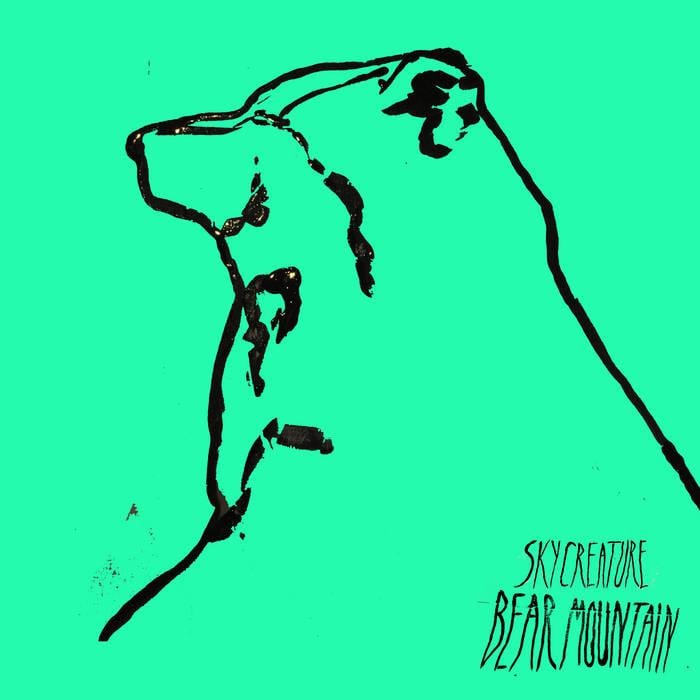
Oh, and those Connery goals? It’s not to perform The Magic Flute or La traviata or another opera at the Met. Instead, Connery tells me she is learning to scream (in a healthy way), yodel, belt, shred (like a punk singer), emit vocal fry like Courtney Love, vocalize like a male heavy metal singer, and do it all in front of audiences who might smash beer bottles against walls and will dance as if the world is about to end.
Trusting your voice in a new range, a new realm, what have you discovered?
That’s a cool way of framing the question. I’m not learning to trust my voice so much as I am learning to be comfortable jumping off a cliff. I have a lot of operatic training, and I did music theater as a kid. My initial transition was to try to integrate the toolkit of that with new music, electronic music, and then to some extent with pop music. That was my own journey. Matt has asked me to go farther, and I’m grateful for that pushing. Most people don’t meet somebody in their lifetime who says, “I think you’re doing great, but you’re at a B-plus. But I need you at an A-plus, and we’re going to work really hard to get you there.” It’s been a re-education because Matt comes from a world where people know how to scream in a healthy way to create more dynamic range. … And of course, there are production pushes, things we do in the recording studio to enhance my voice in the mixing stage. They make me sound bigger and more monstrous than I ever hoped to be.
[Walsh adds:] Majel’s voice can be front and center and often is, but we use Majel’s voice to paint main textures. It’s something Majel’s already been doing with Hae Voces by using a harmonizer. We went really far with that on this record, and we’re going to explore more. We recently played with a woman whose vocal technique was outrageously incredible. It was a crazy sound, and we said, “How is this done? How can we pull this off?”
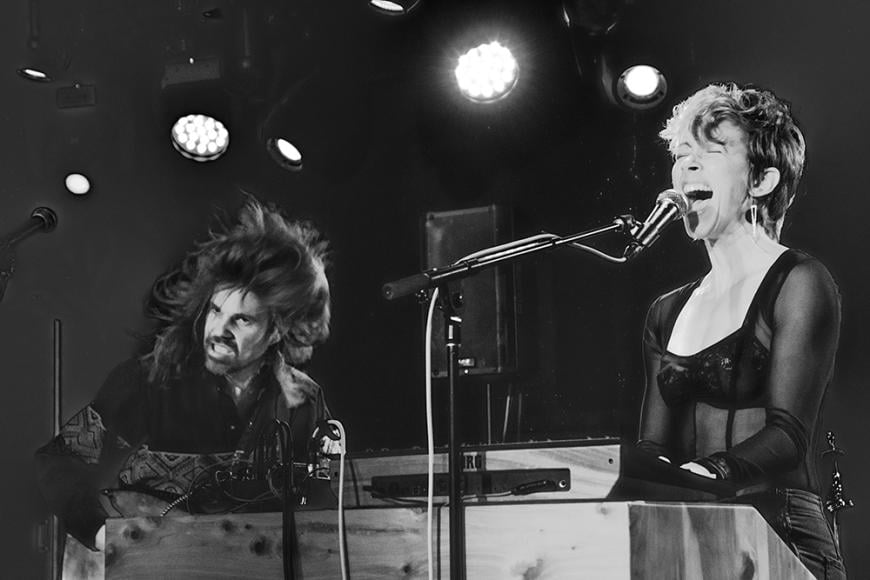
So what will this outrageous voice — when it’s coming out of you — sound like?
You know the ensemble Roomful of Teeth? They’re all classically trained singers, but they will put themselves in situations to learn [for months] Tuvan throat singing or heavy metal singing or yodeling. They come back with their voices enhanced with techniques they can deploy in whatever compositional world someone wants them to work in. Matt and I do something similar. The assumption isn’t that I’m just an opera singer so I can’t figure this out. Matt will say to me he wants me to sing like Courtney Love. See how she’s frying her voice? My usual reaction is I don’t want to do that. It’s unhealthy. But then I come back and work on it.
In some ways, being a non-specialist is what we’re after. I don’t want to say no to any vocal style. If I want to sing like Joni Mitchell, I figure that out. If I want to shred like some punk singer, I want to figure that out, too. Sky Creature is a place that can accommodate all these many styles. That singer we heard had tremendous dynamic range. The power to go from extremely loud to intimate, erotic, and beautiful in a pop vein. Able to deploy heavy metal singing, which women don’t usually do. It’s a genre of men for men. I just have to figure out how to do it without losing my voice, without getting hoarse. I’m also interested in learning how to belt when we get back from tour. It’s chest voice, and I know how to project in head voice because of opera, but I don’t how to sing loudly in my chest voice.
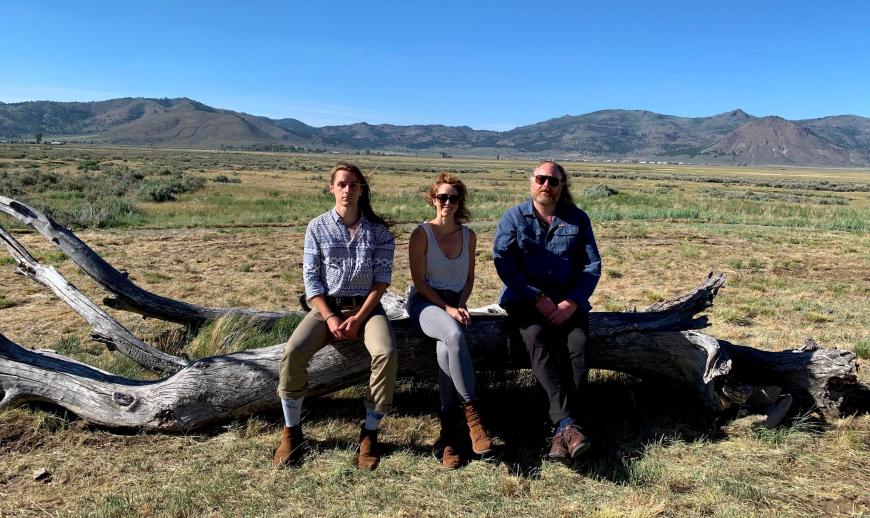
Let’s talk first about a few specific tracks from another recent album, The Rivers Are Our Brothers. (The electroacoustic music on the album is a song cycle on the natural world.) Tell me about “I am snow.” Some lyrics that caught my attention were “I am a wonder. I am the music of a silent world.”
It’s only the second time in my life I’ve tried to write lyrics, so I’m really happy with what I came up with. Having a clear idea of what I wanted was important; knowing I wanted to tell first-person stories, stories accessible to all age ranges. “Snow” was the hardest to write and the last one finished. I couldn’t crack the code on it. It felt too simplistic to me. It felt pat.
It was specifically requested by the commissioner, Musica Sierra, because they’re in the Sierra River Valley near Tahoe and there’s a lot of snow. I found what I wrote to be too charming and Nutcracker-y. But then I accepted that it was all right for it to be charming and beautiful. I’m a trained composer and have fancy pedigrees from institutions, and it’s been drilled into me that the stuff I’m writing needs to be sophisticated. It needs to be idea rich. This song is simple, but it’s one of the most effective.
Matt really boosted up the [vocal processing effects using] Helicon, putting those tiny high voices in the mix. That became a feature of it, and now there’s an adorable video the commissioner made that goes with it. Can I say one more thing? When I was reading about snow online, I discovered that snow is generated from a speck of dirt or sand that happens to be blowing in the air. I was enchanted by that, and it was the central thing that fired that song.
Now let’s talk about the new double EP, Bear Mountain/Childworld, which you are headlining during the tour. The track “She is older”: What did you find, and what were you hoping to discover?
It was written just as my last band, Hae Voces, was breaking up. I learned most from Hae Voces that I didn’t quite know how to write a song from beginning to end. I could write a vocal part and some sort of accompaniment, but I didn’t know how to create the bass line, the percussion track, to write a fully recordable idea. I had just learned to work in a digital audio workstation. I tracked all the parts myself. Matt really likes this song. He thought it felt haunted, like a strange little playhouse. In some ways the kernel of Childworld began with “She is older.” It’s the clearest expression of Childworld, this place where anything can happen. It’s a world that to me as a child felt large and full of wonder but also full of fear. I think it’s Matt’s favorite track.
[Walsh adds:] I just think it’s the most harmonically adventurous song. I like the way it moves unpredictably. It was also the song that was the least modified from Majel’s initial vision. All the others were a little fucked up; they needed repairs and more ideas. But this one, we worked only the end section, but the rest of it is pretty much like the demo.
And “Light Reflected” from the Bear Mountain side of the EP?
That’s from the side that’s primarily Matt’s compositions. It took Matt many weeks to write the song, but we finished it at a studio called Big Blue North while working on the Childworld stuff. I remember Matt finished the lyrics while he was out smoking. He’ll record himself singing on voice memos and send me a composition of voice memos, and we’ll piecemeal a song together. It was stylistically different for Sky Creature. This one feels more vocal-centric and gentler than what Matt generally writes.
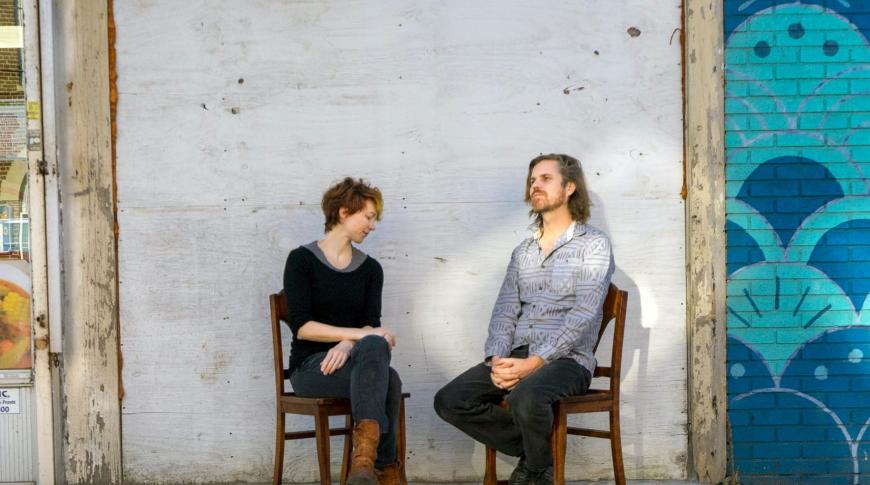
[Walsh adds:] I’ll push her to do different stuff, but in this instance, I had made this trinket, just screwing around, not planning to be writing anything. I said to her, “Check out this little thing, it’s funny, right?” And Majel said, “I love this. You need to not throw this away.” Majel was pushing, and I said, “All right, we’ll do it.” I had some of the lyrics and melodies in my head and went out for a drive, but it was never assembled until that morning. We just went in and did it and that track on the album is take two.
“No One”: What can you say about that track?
It shows the extreme poles of Bear Mountain. It was finished first, a really bold opening salvo. It’s not core to the sound of the band but contains the distinguishing elements: a ferocious approach to guitar playing and gigantic, oceanic vocals. Matt introduced me to Eclipse [a rack-mountable reverb unit made by Eventide], which produces delays in the voice that makes it sound like a banshee. We had to create a vocal approach that wouldn’t get swallowed by the ferocity of his guitar. We did different takes, styles, and vocal production in different rooms, and it was hard to find it. Now that it’s there, it’s what we wanted.
Talk to me about the songwriting you’re doing now. What emerged for you while writing “Pretend to Cry”?
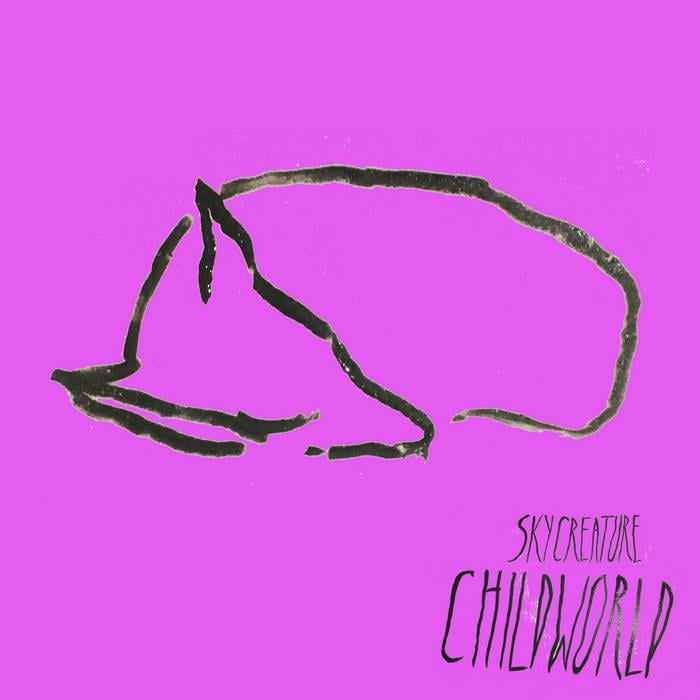
The lyrics come from a particularly embittered break up. It’s a revenge fantasy. The song existed in another iteration, and the version on Childworld is different yet again. Since Matt and I started working together, our writing styles have become integrated. Matt felt we hadn’t done a good enough job on “Pretend to Cry,” but I thought he was nuts. He developed a sexier guitar part that to me references The Police. The song works better that way. We had started to perform it as part of a Sky Creature set, and it’s where my idea to do a combined double EP started. We realized the audience didn’t notice the style as different. But the song had to undergo positive modification and became less electronic, groovier, more danceable, more stripped down. I tend to create layers as an apologetic gesture. Matt’s approach is that if a song can survive on nothing, then you’ve done your work. He stripped it back, and now it’s super fun.
You’ve both mentioned the essential push-pull friction of your collaboration but also exhilaration. Tell me more.
Matt said earlier that neither of us is entirely happy working by ourselves. I have arrived at what I feel is the perfect balance. My math might not be right on, but I’ll say it’s eight percent doing my own stuff in the classical world that Matt is generally not involved in. I also do podcasting in a new series coming out in the fall — that’s about 20 percent. The rest is Sky Creature. So 28 percent of the time I’m entirely my own boss, make all the decisions. The rest of the time, I’m being challenged and told nothing is ever finished. I respect Matt so much that I will take that and will try to work harder. He’s the ideal collaborator because he’s smart in a field where I can’t be competitive with him.
I grew up in classical opera. The rules of that game are that my audiences sit politely in chairs and clap at predetermined times, read program notes. If they talk to each other at all, they whisper. Now I’m in a world where all bets are off: People are throwing beer bottles against the wall and dancing nonstop. I don’t feel entirely comfortable there, but it’s thrilling that at age 42, I get to be in a rock band, traveling the country with someone I deeply respect and enjoy. It’s the richest environment. Most people my age I see settling into an established career and getting bored. I got to reinvent the wheel and try to write and make music in a world I’ve never been in before.
Fear: Tell me your childhood haunts that continue into adulthood.
It’s such a cool question. It’s so direct. I’m fearful of a lot: tight spaces, certain animals, tall people, loud things, music. I was reading a book called Quiet that was teaching me about why life is hard for me. I carry anxiety when walking into crowded places on my own: I’m an introvert and become fatigued and find groups of people overwhelming. As a performer, it’s a task, but I’m good at trying to get unfearful.
Putting this tour together is a great example. Matt didn’t want to do it because the technical, mixing part of this band takes a tremendous amount of time. To book a tour, it had to be on me. I was terrified. The thought of calling someone I don’t know on the phone? I can’t think of anything scarier. I sat down and made a spreadsheet with 55 cities. I designed a tour I’d be proud to go on myself. We ended up with a 42-city tour. It started scary and ended up a cool thing. I love the idea of being in a rock band, but at every venue, I’m frightened of the people there, the space, every second on stage. I’m also enthralled by doing it in spite of being scared. I started from cowering, but it feels sensational.
Did you have to relocate geographically to find this new place in yourself and your work?
It helped. But there’s the saying, “Wherever you go, there you are.” I’ve been itinerant my whole life. Even being in the Bay Area for eight years, I was commuting to New York frequently. I like being on the move. But yeah, it was critical because I needed a fresh start. Don’t get me wrong: The Bay Area from a lifestyle perspective is freaking gorgeous. I could go to Tilden Park and hike and take my dog. But I was not productive. Here, it’s grimier and harder, but I’m wildly productive.


